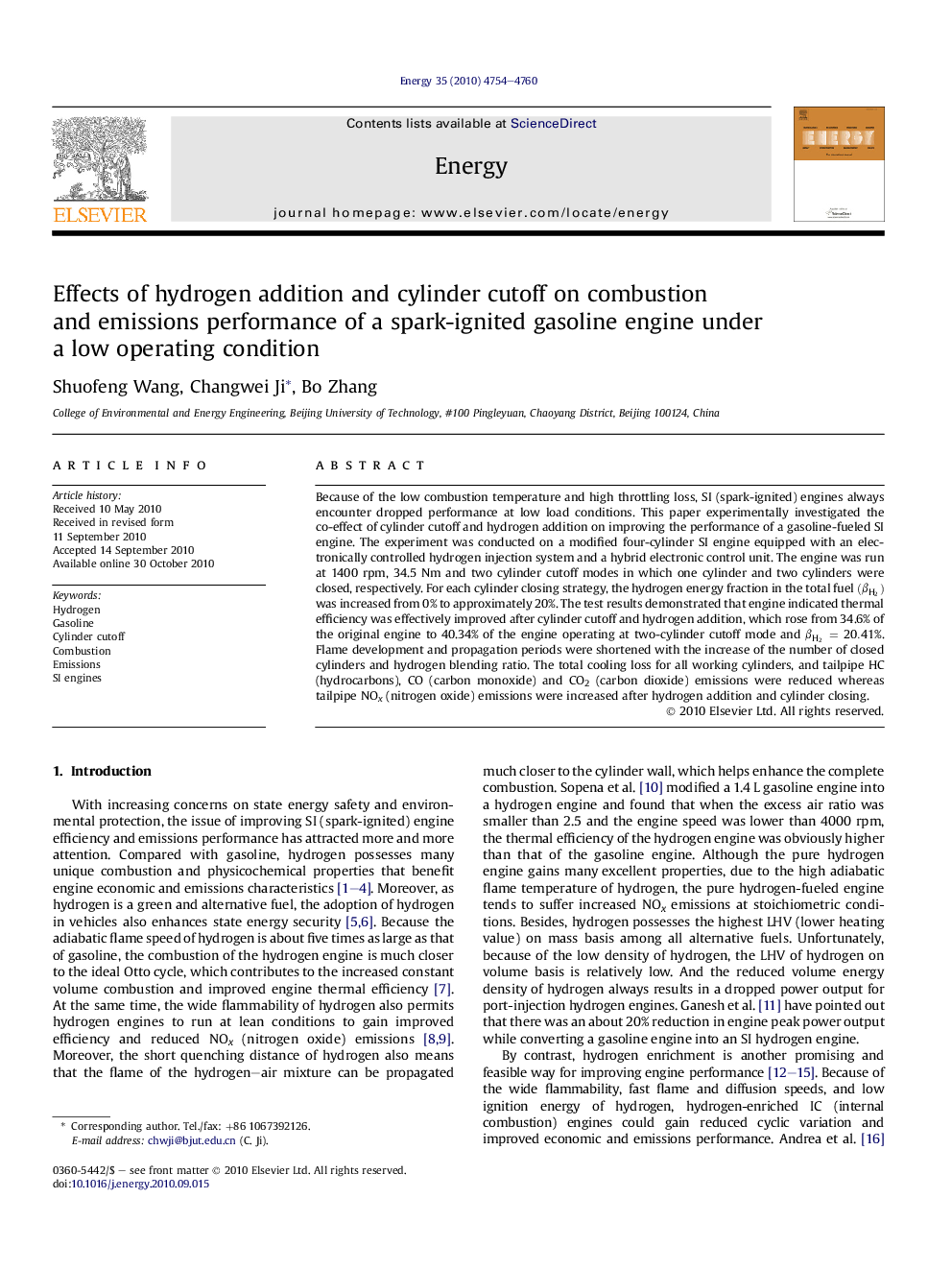| Article ID | Journal | Published Year | Pages | File Type |
|---|---|---|---|---|
| 10682768 | Energy | 2010 | 7 Pages |
Abstract
Because of the low combustion temperature and high throttling loss, SI (spark-ignited) engines always encounter dropped performance at low load conditions. This paper experimentally investigated the co-effect of cylinder cutoff and hydrogen addition on improving the performance of a gasoline-fueled SI engine. The experiment was conducted on a modified four-cylinder SI engine equipped with an electronically controlled hydrogen injection system and a hybrid electronic control unit. The engine was run at 1400 rpm, 34.5 Nm and two cylinder cutoff modes in which one cylinder and two cylinders were closed, respectively. For each cylinder closing strategy, the hydrogen energy fraction in the total fuel (βH2) was increased from 0% to approximately 20%. The test results demonstrated that engine indicated thermal efficiency was effectively improved after cylinder cutoff and hydrogen addition, which rose from 34.6% of the original engine to 40.34% of the engine operating at two-cylinder cutoff mode and βH2=20.41%. Flame development and propagation periods were shortened with the increase of the number of closed cylinders and hydrogen blending ratio. The total cooling loss for all working cylinders, and tailpipe HC (hydrocarbons), CO (carbon monoxide) and CO2 (carbon dioxide) emissions were reduced whereas tailpipe NOx (nitrogen oxide) emissions were increased after hydrogen addition and cylinder closing.
Related Topics
Physical Sciences and Engineering
Energy
Energy (General)
Authors
Shuofeng Wang, Changwei Ji, Bo Zhang,
